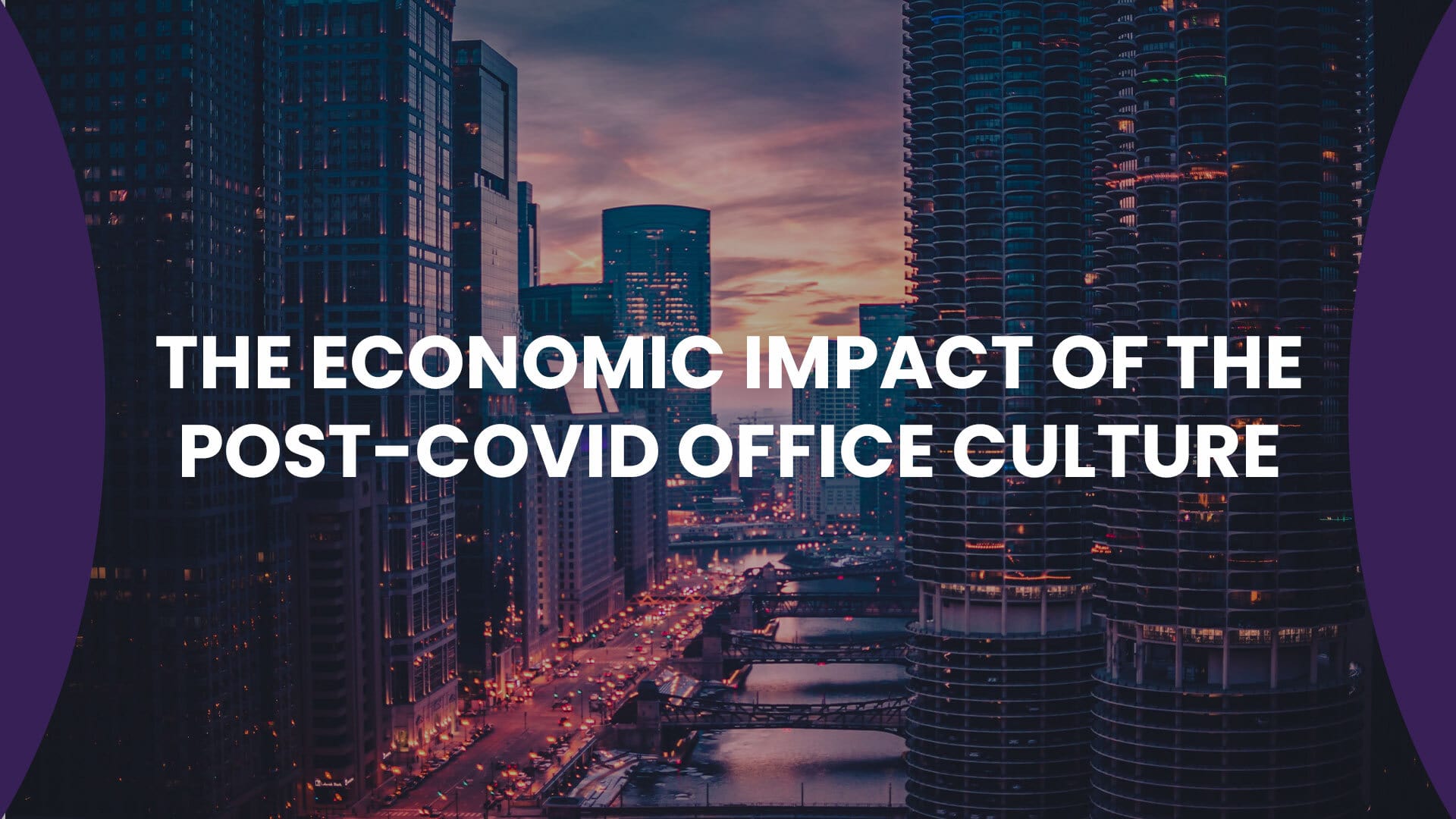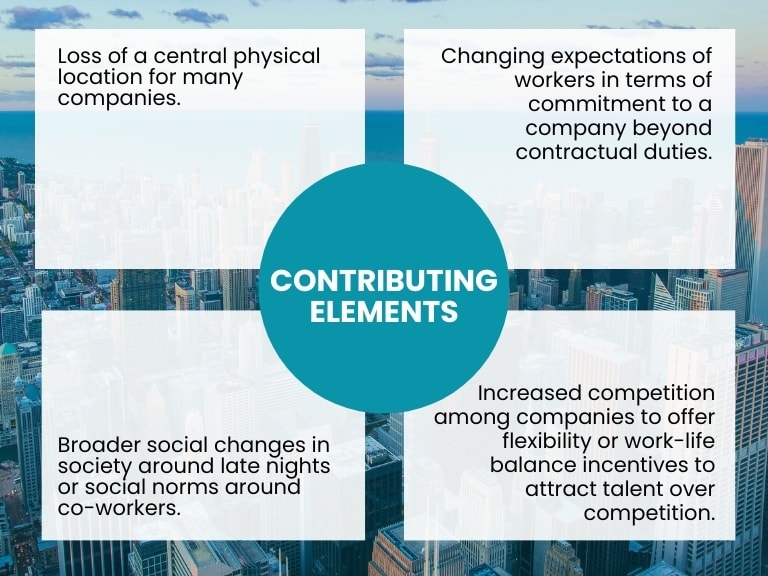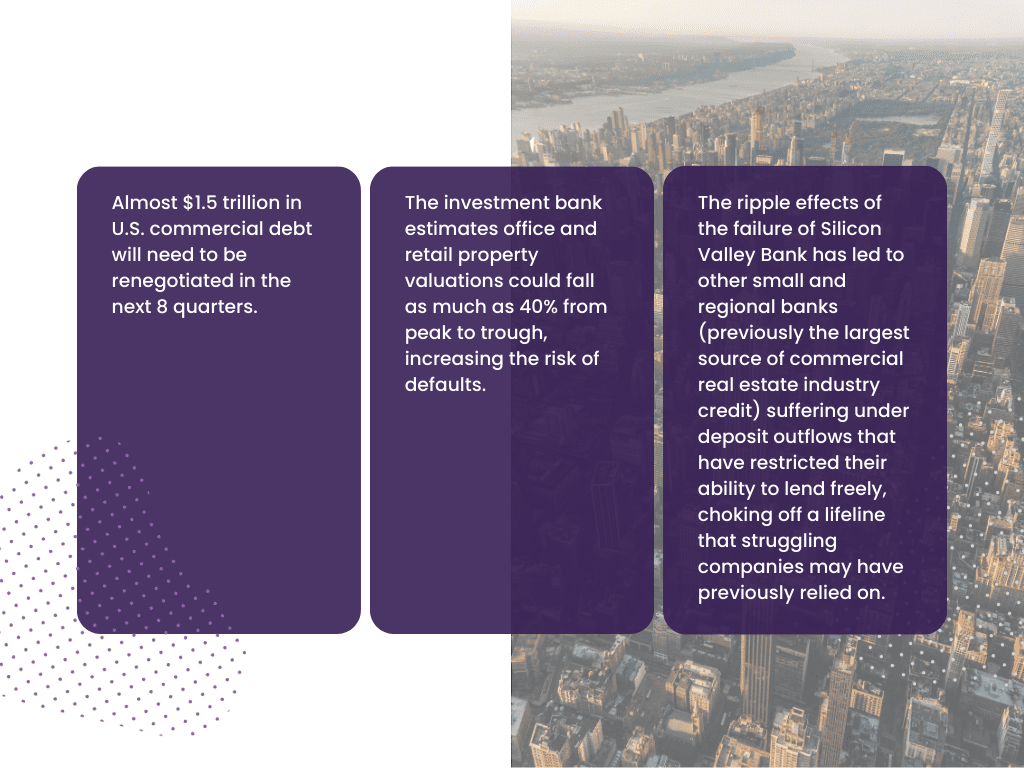08 Jan

The economic impact of the post-COVID office culture
Before the COVID-19 pandemic gripped the world in early 2020, office social events were a core component of the on-premises working experience. From potluck lunches to happy hours, office holiday parties to corporate outings to sporting events to concerts, anyone working in a traditional office setting knew that their calendar would often include “optional” office events outside the 9-to-5 workday. Depending on the workspace, these events could be something that everyone looked forward to, or something everyone rolled their eyes at when they saw the next email invitation in their inbox. Love them or hate them, the office social life was a standard part of the pre-pandemic corporate experience.
Fast forward three years later, and the entire traditional corporate work environment looks nothing like it used to. Evidenced by vacant downtowns and high-rise buildings in major cities, as well as fully remote or hybrid organizations with thousand of employees, few could have envisioned that the coronavirus would have some fundamentally transformed traditional office culture in so many ways. And office event planning is no different.
There’s no single factor that explains the new landscape of office social culture, but here are some of the contributing elements:

Regardless of the central driving factor, the economic impacts of this shifting office social culture are real and visible. Cities like San Francisco and Chicago frequently make headlines for their struggling downtowns and related hospitality sectors. City officials and planners are introducing a variety of programs to attempt to reshape their economic foundations as a result. So far, the results are at best a mixed bag.
In Part 1 of our series exploring how fundamental changes in office social culture and events continue to reverberate through society, we’ll look at the the economic scale of impacts being felt on a daily basis in the boardrooms and dining rooms of America’s downtowns.
What the data reveals about the impact of empty offices on cities
Consider some of these statistics that reflect just how intertwined office social culture and downtown economies were pre-COVID, and the measurable impacts on different economic sectors since office events and social lives underwent their COVID-induced upheaval:
- According to a July 2023 report published by McKinsey, “New York City’s urban core lost 5 percent of its population from mid-2020 to mid-2022, and San Francisco’s lost 7 percent. Urban vacancy rates have shot up. Foot traffic near stores in metropolitan areas remains 10 to 20 percent below prepandemic levels.”
- Data from resident and business-owner surveys in Buffalo, Albequerque, and Flint demonstrated how public perception of downtown as a “ghost town” can become self-fulfilling prophecy. As potential visitors perceive a city to be “empty”, they become less likely to visit – leading to a “death spiral” of higher vacancies, less traffic, and devastating impacts to city tax revenues from downtown districts. While no one would confuse these mid-size cities with economic hubs like New York or San Francisco, they illustrate the fears of city officials attempting to prevent a similar course of events.
- While evidence remains conflicted, some experts and economic journalists have pointed to rising crime rates in emptier downtown areas as another symptom of the retreat from office social lives that kept cities vibrant outside 9-to-5 hours.
- Changing office social lives can also be tracked in restaurant reservation data. Circana reported that in the past year, U.S. consumers had 264 million restaurant dinners after leaving work, which is down 43% from 2019 levels. And reservations are now earlier: In 2023, 26% of after-work restaurant dinners happened before 6 p.m., compared with 21% in 2019. This naturally means less tips for service staff and less revenue for food industry business owners to support staffing or businesses further down the supply chain.
- Even beyond city centers, areas like Silicon Valley (where office vacancies have risen to 33%, more than 8x pre-pandemic levels) and the Research Triangle in North Carolina (where vacancies have passed 18%) demonstrate that empty offices are a national problem, not just an urban one.
A worrying commercial real estate future
As if the current data wasn’t telling a troubling story already, the numbers that are truly concerning economists and business leaders are those with an eye on the future. Beyond the empty storefronts and empty offices, the ripple effects of changing office culture also have the potential to cause economic damage that could spread far beyond downtown business districts.
Skyrocketing interest rates thanks to frequent Fed rate hikes have made previously cheap debt a ticking time bomb for all borrowers, but particularly for commercial real estate companies. Vividly illustrated by the recent bankruptcy of WeWork, companies who had been taking advantage of cheap money to finance downtown real estate purchases now face a double whammy of empty offices (and thus, declining rents) and rising debt costs on their balance sheets.
This has led to many economists pointing to commercial real estate as a ticking time bomb. Considering the pure size of the commercial real estate industry as part of the global economy, a series of bank and management company failures could have a catastrophic impact on other intertwined elements like pension funds and civic budgets. It’s hard not to think of the 2008 sub-prime mortgage crisis as a potential model for what this may look like. Consider some of the numbers from a report published by Morgan Stanley in April:

Similar challenges facing the service industry
Beyond the commercial real estate market is a similarly brewing crisis in the hospitality industry that, coupled with the loss of office social culture and revenue from after work dinners and drinks, creates an equally worrisome long-term forecast. Data around the hospitality and events industries worldwide since the pandemic reveal an array of challenges for business owners:
Perhaps the most widely reported crisis for the service industry is the severe staffing shortages facing business owners. Kitchens without chefs, bars without bartenders, caterers without delivery drivers – the staffing crisis has spread across specific verticals and threatens its own spiral. With less staff, service industry businesses deliver declining quality or customer experiences. As a result, customers stop showing up.
Increased inflation since the pandemic has also triggered significantly higher staffing and supply costs, leading businesses to raise prices at increased rates that may further drive away the shrinking pool of customers.
Finally, hospitality businesses are facing the same challenges from rising interest rates as the commercial real estate sector. With many hospitality businesses requiring capital for initial operating costs or upgrades to their facilities, the decreased flow of “cheap” money means many struggling businesses will no longer have access to capital needed to stay afloat during seasonal downturns. Similarly, businesses seeking to innovate to shift away from reliance on previous demand from corporate events or after-work social life won’t be able to secure the financing needed to do so.
What does the future hold?
The challenges facing city officials, CEOs, hospitality professionals, and commercial real estate managers are different in size and scope. But the unifying factor of a fundamental shift in office culture and social life remains the same. While the data paints a troubling picture, there remain unanswered questions. The answers to these questions may be the difference between a slow recovery to a “new normal”, or a future where the most problematic trends become reality:
Will continued efforts to get employees to return-to-office minimize the current impacts of empty offices in the near future? Or has the hybrid or remote work-style become a permanent fixture of office culture today?
Have interest rates stabilized (as some recent trends might be indicating), and thus allow for the capital needed to innovate offices, downtown real estate markets, and hospitality businesses alike?
Can converting significant portions of commercial real estate in city centers to residential housing bring remote workers back to the areas they’ve vacated?
Do business leaders begin to adopt the most effective methods of incentivizing workers to return to offices, even if it means a fundamental shift from the “good old days”?
Are there any more disruptive social trends (AI, geopolitical, unknown) that may throw a curveball that current trends and predictions aren’t accounting for?
Adam Hausman co-founded RSVPify in 2013 and has been passionate about event tech and ticketing software ever since. Also founder of Greenlight Growth Marketing, he holds degrees from Indiana University (BA English/Psychology 2008) and the University of Illinois-Chicago (M.Ed. Secondary Education 2012). He lives in Maine with his wife, 2 kids, and 2 annoying cats.










Adam Hausman